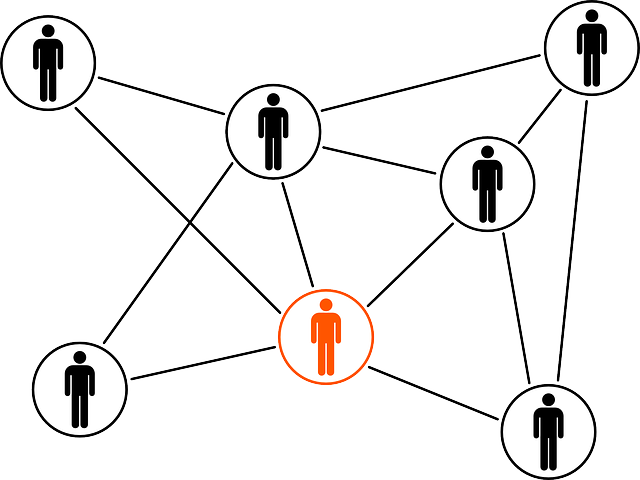IS WEBSITE A SECONDARY SOURCE?
A website is a secondary source if it analyzes, summarizes, evaluates and processes information from primary sources. Information on a secondary source website can exist in the form of published blog posts, review articles, bibliographies, reference books, indexes, journals, commentaries and treatises.

Understanding Primary and Secondary Sources
Primary sources are records of events or evidence as they are first described or actually happened without any interpretation or commentary.
It is information that is shown for the first time or original materials on which other research is based.
Primary sources are immediate, first-hand accounts of a topic, from people who had a direct connection with it.
Examples of primary source include:
- Raw statistical data
- Official documents and records
- Personal communications (e.g. letters, interviews)
- Letters
- Manuscripts
- Diaries
- Audio or video recordings
- Born-digital items (e.g. emails)
- Objects or artifacts (such as works of art or ancient roads, building, tools and weapons)

Secondary sources describe, interpret, comment upon, analyze, evaluate, summarize, and process primary sources. They provide second-hand information and commentary from other researchers.

Examples of secondary sources:
- Bibliographies
- Biographical works
- Reference books, including dictionaries, encyclopedias, and atlases
- Articles from magazines, journals, and newspapers after the event
- Literature reviews and review articles (e.g., movie reviews, book reviews)
- History books and other popular or scholarly books
- Works of criticism and interpretation
- Commentaries and treatises
- Textbooks
- Indexes and abstracts
What are Secondary Source Websites?
A website is called a secondary source website if its publications are derived from other information outlets.
Secondary source websites are more common than primary source websites and they make up to 87% of the total website available on the internet.
Categories of Secondary Source Websites
Secondary source websites exist in different categories.
They include:
- Law Review and Journals Websites
- Legal Dictionary websites
- Legal Encyclopedia and Information Websites
- Historical Websites
Examples of Secondary Source Websites
Listed below are various examples of secondary source websites grouped under the different secondary web categories.
1. LAW REVIEW AND JOURNAL SECONDARY WEBSITE EXAMPLES
| WEBSITES | DESCRIPTION |
|---|---|
| Directory of Open Access Journals | DOAJ is a community-curated online directory that indexes and provides free access to high quality, open access, peer-reviewed journals. |
| Find Law: Law Review Index | FindLaw.com works hard to bring consumers and attorneys relevant legal news, information, and resources. The index contains law reviews from 162 law institutions in the states. |
| Google Scholar | Google Scholar searches both full text articles and abstracts that are available for free online, so users should be aware that not all results will lead to full articles. |
| Law Library of Congress: Law Reviews Online | Described as the world’s largest law library, with a collection of over 2.9 million volumes spanning the ages and covering virtually every jurisdiction in the world. |
| Law Review Commons | The largest collection of free and open law review scholarship with over 300 open-access law reviews, 220,000 articles, free current issues & archives from 1852. |
| WEBSITES | DESCRIPTION |
|---|---|
| Directory of Open Access Journals | DOAJ is a community-curated online directory that indexes and provides free access to high quality, open access, peer-reviewed journals. |
| Find Law: Law Review Index | FindLaw.com works hard to bring consumers and attorneys relevant legal news, information, and resources. The index contains law reviews from 162 law institutions in the states. |
| Google Scholar | Google Scholar searches both full text articles and abstracts that are available for free online, so users should be aware that not all results will lead to full articles. |
| Law Library of Congress: Law Reviews Online | Described as the world’s largest law library, with a collection of over 2.9 million volumes spanning the ages and covering virtually every jurisdiction in the world. |
| Law Review Commons | The largest collection of free and open law review scholarship with over 300 open-access law reviews, 220,000 articles, free current issues & archives from 1852. |
2. LEGAL DICTIONARIES SECONDARY WEBSITE EXAMPLES
| WEBSITES | DESCRIPTION |
|---|---|
| FindLaw: Law Dictionary | The FindLaw Legal Dictionary offers free access to over definitions of legal terms. |
| Nolo's Free Dictionary Of Law Terms and Legal Definitions | plain-English definitions for legal terms |
| Louisiana State Bar Association | Glossary of Legal Terms and Procedures. |
| American Bar Association Glossary | Consumers' Guide to Legal "HelpLegal" Terms Glossary |
| The People’s Law Dictionary | Co-authored by Gerald and Kathleen Hill provides a custom bar for easy search of legal terms and definitions. |
| WEBSITES | DESCRIPTION |
|---|---|
| FindLaw: Law Dictionary | The FindLaw Legal Dictionary offers free access to over definitions of legal terms. |
| Nolo's Free Dictionary Of Law Terms and Legal Definitions | plain-English definitions for legal terms |
| Louisiana State Bar Association | Glossary of Legal Terms and Procedures. |
| American Bar Association Glossary | Consumers' Guide to Legal "HelpLegal" Terms Glossary |
| The People’s Law Dictionary | Co-authored by Gerald and Kathleen Hill provides a custom bar for easy search of legal terms and definitions. |
3. LEGAL ENCYCLOPEDIA AND INFORMATION SECONDARY WEBSITE EXAMPLES
| WEBSITES | DESCRIPTION |
|---|---|
| Cornell's Legal Information Institute: Wex | Wex is a free legal dictionary and encyclopedia sponsored and hosted by the Legal Information Institute at the Cornell Law School. |
| FindLaw: Louisiana Law | This section contains user-friendly summaries of Louisiana laws as well as citations or links to relevant sections of Louisiana's official online statutes. |
| Oyez | This site collects information related to the U.S. Supreme Court. |
| WEBSITES | DESCRIPTION |
|---|---|
| Cornell's Legal Information Institute: Wex | Wex is a free legal dictionary and encyclopedia sponsored and hosted by the Legal Information Institute at the Cornell Law School. |
| FindLaw: Louisiana Law | This section contains user-friendly summaries of Louisiana laws as well as citations or links to relevant sections of Louisiana's official online statutes. |
| Oyez | This site collects information related to the U.S. Supreme Court. |
4. HISTORICAL SECONDARY WEBSITE EXAMPLES
| WEBSITES | DESCRIPTION |
|---|---|
| U.S. Army Center of Military History | This website records the official history of the United State Army both in peace and war. |
| Journal of Southern History | Published four times a year by the Southern Historical Association. For eighty-five years, the Journal has published the best of southern history. |
| WEBSITES | DESCRIPTION |
|---|---|
| U.S. Army Center of Military History | This website records the official history of the United State Army both in peace and war. |
| Journal of Southern History | Published four times a year by the Southern Historical Association. For eighty-five years, the Journal has published the best of southern history. |

Primary vs Secondary source website: which is preferred?
It depends on the context of usage.
Researchers use both primary and secondary sources.
While producing this article, I consulted both primary and secondary source websites.
Primary source websites are credible as original sources of information. Most times, the information from primary source website are raw data and difficult to comprehend.
Information gotten from secondary source website are much easier to comprehend but lacks research originality.
How to identify a secondary source website
There are 5 ways to tell if a website is a secondary source.
- Take a look at the domain extension.
Domain extensions are the suffixes at the end of a domain name. They are also known as TLDs (top-level domains).
For example in “websitehurdles.com”, the domain extension is “.com”
Different domain extensions have different meanings.
For example:
.COM is used for commercial websites e.g AFRILCATE.COM (a high-end reference learning website)
.ORG is used for organizational websites e.g UNICEF.ORG (a U.N organization that advocates for the protection of children’s rights all over the world).
.NET is used for internet, database or networking-based websites e.g BEHANCE.NET (a network of artists and designers).
.GOV is a restricted domain extension and used only by governmental entities. eg. USA.GOV (The official website of the United States government).
.EDU is used by post-secondary educational institutions eg. HARVARD.EDU (Harvard University education website.
.INT is used by international organizations established by treaty eg. AU.INT (African Union website).
.BIZ is used by businesses.
.MIL is used by state or country military e.g ARMY.MIL (United state military website).
Learn more about domain extension here: Domain Name 101
Governmental and official Websites with domain extensions of .edu/, .gov/, .org/, and .int/ are mostly primary sources with a very high level of credibility while non-official websites with .biz, .info, .com and other TLD’s are mostly secondary source websites.
- Check if the website has a known relevance or authority on the given subject under consideration.
- Analyze the expertise of the writer. Is the person/organization known for publishing original content in the subject field?
- Try to understand the nature of the content. Is the article showcasing income reports or case-study of other writers/websites already published on their individual channels? If yes, then it’s a secondary source.
- Most importantly, check if the article has external links or references.
This can be found either at the end of the article or in between the writeup via tags like: “read more”, “sources”, or tiny numbering.
External links serve as pointers to websites or articles where the information was originally gotten from.
An article is a secondary source for a given piece of information if it contains links pointing externally from the said content.

external links pointing to other writers or websites
Can a website be both a primary source and a secondary source?
Yes, it’s very possible for a website to be both a primary and secondary source of information.
Commercial websites are generally designed to serve both purposes. It all depends on the type of published article.
For example, the Legal Information Institute by Cornell University Law School is known for it’s large database of primary sources. but it also contains useful secondary materials like the Wex Legal Dictionary/Encyclopedia.
This indicates that websites can serve as both a primary and a secondary source of information.
Support Website Hurdles

Website Hurdles is readers supported.
If you find this content helpful, you can support me by buying me a cup of coffee.
Till we meet again on another article,
Do have a nice day!
Thank you so much this has really helped my college career! you can publicated this if you want definitely if it will help your website.
Sure.. I’m glad you enjoyed it.
Very Good! Thanks
You are welcome✨